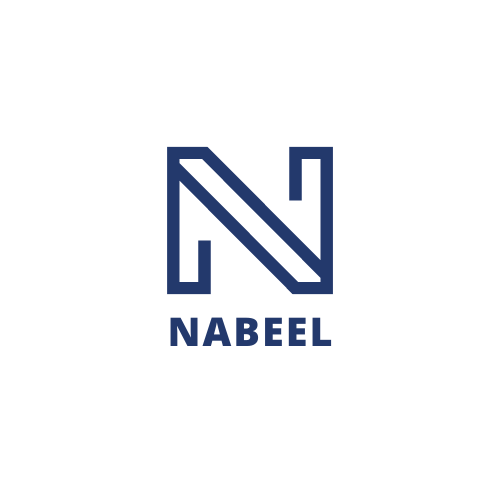Microsoft Teams vs Slack: A Detailed Comparison for 2025
In the ever-evolving world of digital communication, two giants have consistently stood out: Microsoft Teams and Slack. As we delve into 2025, both platforms have introduced significant updates and enhancements. This post will guide you through a detailed comparison to help you choose the best collaboration tool for your team.
Table of Contents
1. Introduction: The Evolution of Collaboration Tools
2. User Interface and Experience 🌟
3. Features and Integrations 🔗
4. Pricing Models 💰
5. Security and Compliance 🔒
6. Conclusion: Which Should You Choose?
7. FAQ Section
Introduction: The Evolution of Collaboration Tools
Back in the early 2000s, email dominated workplace communication. Fast forward to 2025, and we have platforms like Microsoft Teams and Slack that have redefined how we collaborate. Both tools have become essential in remote and hybrid work environments, offering robust features that cater to various organizational needs.
User Interface and Experience 🌟
Microsoft Teams: Teams has undergone a significant redesign in 2025, focusing on a cleaner, more intuitive interface. Its integration with the Microsoft 365 suite is seamless, making it an excellent choice for organizations already embedded in the Microsoft ecosystem. The navigation is straightforward, with a left-hand sidebar that provides easy access to chats, teams, and calendar.
Slack: Slack continues to prioritize simplicity and user-friendliness. Its customizable interface allows users to personalize their workspace, which can boost productivity. The platform’s recent updates include enhanced dark mode options and improved accessibility features, ensuring a smooth experience for all users.
Features and Integrations 🔗
Microsoft Teams: Teams offers a comprehensive set of features including video conferencing, file sharing, and collaborative document editing. In 2025, Teams has expanded its integration capabilities with third-party apps, allowing for a more customized workflow. The inclusion of Microsoft Loop, a new feature for real-time co-authoring, has been a game-changer.
Slack: Known for its robust integration ecosystem, Slack connects with over 2,400 apps, including Google Workspace, Trello, and Zoom. The platform’s 2025 update has introduced new automation tools, enabling users to streamline repetitive tasks effortlessly. Its “Slack Connect” feature continues to bridge external communication gaps, facilitating seamless collaboration with partners and clients.
Pricing Models 💰
Microsoft Teams: Teams offers a free version with basic features, but its premium plans, starting at $5 per user per month, provide advanced functionalities like meeting recordings and increased storage. The pricing is particularly appealing for businesses already using Microsoft 365, as Teams is included at no additional cost.
Slack: Slack’s free plan is suitable for small teams, but its limitations on message history and app integrations may prompt users to consider the paid plans. Starting at $6.67 per user per month, Slack’s pricing is competitive, particularly for organizations that rely heavily on integrations and need extensive customization.
Security and Compliance 🔒
Microsoft Teams: Teams is built on the Microsoft 365 framework, offering enterprise-grade security with end-to-end encryption and compliance certifications like GDPR, HIPAA, and SOC 2. The 2025 updates have further strengthened its security posture with AI-driven threat detection.
Slack: Slack maintains robust security features, including data encryption both in transit and at rest. It complies with major standards like ISO/IEC 27001. The platform’s introduction of “Enterprise Key Management” in 2025 allows organizations to control their encryption keys, enhancing data security.
Conclusion: Which Should You Choose?
Choosing between Microsoft Teams and Slack in 2025 largely depends on your organization’s specific needs. If you’re deeply integrated into the Microsoft ecosystem or require extensive collaboration on documents, Microsoft Teams might be your best bet. However, if your team values a highly customizable workspace with vast integration capabilities, Slack is the way to go. Both platforms have their strengths, and understanding these can help ensure you make an informed decision.
FAQ Section
1. Can Microsoft Teams and Slack be integrated?
Yes, there are third-party tools available that allow some level of integration between Microsoft Teams and Slack, enabling cross-platform communication.
2. Which platform is better for large enterprises?
Both are suitable, but Microsoft Teams might have an edge due to its seamless integration with Microsoft 365 and enterprise-level security features.
3. How do I choose between Slack and Microsoft Teams?
Consider your existing software ecosystem, budget, and specific features you need. Testing both platforms with free trials can also provide valuable insights.
4. Are there any major updates in 2025 for these platforms?
Yes, both platforms have introduced new features and improvements in 2025, focusing on integrations, user experience, and security enhancements.
5. Is there a learning curve for using Microsoft Teams or Slack?
Both platforms are designed to be user-friendly, but there might be a slight learning curve, especially for users new to digital collaboration tools.
In summary, both Microsoft Teams and Slack have continued to innovate and adapt to the changing demands of modern workplaces. By understanding their unique offerings, you can better align your choice with your organization’s goals.
Keywords:
best free cloud storage for photos 2025, best cloud storage apps 2025, best cloud backup solutions for small business 2025, best cloud gaming services 2025, hybrid cloud vs multi-cloud setup tutorial, AI-powered cloud operations automation 2025, cloud computing certifications for beginners, cloud migration tools comparison 2025, cloud storage vs NAS for home users, cheap cloud hosting providers 2025, best Slack alternatives 2025, Microsoft Teams vs Slack comparison 2025, Google Chat vs Slack integration 2025, Discord for business chat and collaboration 2025, Zoom chat vs Slack features 2025, best project management software 2025, best free project management software 2025, Asana vs Trello head-to-head 2025, ClickUp project management app 2025, free task management tools 2025 (Trello, Asana, etc.), best to do list apps 2025, Any.do task management app guide 2025, Google Tasks mobile app tutorial 2025, Todoist productivity app review 2025, best note-taking apps 2025, Evernote alternatives (Notion, OneNote) 2025, GIMP vs Photoshop image editing 2025, best code editor apps 2025, Visual Studio Code tutorials 2025, best free VPN apps 2025, best free PDF editor apps 2025, PDFGear vs Adobe Acrobat comparison 2025, best password managers 2025, open source office suite (LibreOffice) 2025, best Microsoft Office alternative 2025, file sharing apps 2025 (Google Drive, WeTransfer, etc.), Google Drive file sharing tips 2025, Lemon8 social media app 2025, Airchat voice-first social app 2025, eToro social trading platform guide 2025, TikTok content creation tips 2025, Instagram reels tutorial 2025, ChatGPT app usage and tips 2025, best AI productivity tools 2025 (Notion, ChatGPT, etc.), best AI transcription apps 2025 (Rev, Sonix, etc.), best photo editing apps for iPhone 2025, best video editing apps 2025 (mobile), best note-taking apps iPad 2025, best chatbots and AI assistants 2025 (Claude, Bard, etc.), Claude AI vs ChatGPT overview 2025, Zapier Agents for workflow automation 2025.



